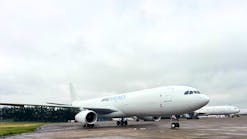The impact of human factors training
By John Goglia
April 1998
John Goglia is a member of the National Transportation Safety Board (NTSB). He has been a technician for USAir for the past 30 years.
As I travel around I am often asked about human factors issues and to provide examples of how human factors impact on a working technician. A list of human factors has been developed which have the most influence on mistakes which are made. This list is referred to as the "Dirty Dozen." One of these that I often see in enforcement cases is Norms. Those are things that we do, at a given location, station, hangar, etc., that are different from what is in the manual or procedures. This often has a way of impacting a technician who is relatively new to an operation, but not necessarily new to aircraft maintenance.
During a regular overnight maintenance visit, a Boeing aircraft was scheduled to have the lightest or minimum check accomplished. This is the type of check where you inspect the tires and brakes, perform an outside walk-around, and check lights and emergency equipment. Not exactly a heavy inspection, but one that is performed very frequently.
One night a technician who had transferred to line maintenance from a heavy maintenance hangar was assigned to perform this check. Additionally, this aircraft needed to be relocated to another gate prior to the morning departure. So our technician started to perform the overnight check and prepare for the repositioning of the aircraft. His experience, as I mentioned, was in heavy maintenance where the company procedures were followed without exception. In this case the company procedure required that a nose gear lock pin be installed whenever the nose gear was worked on or whenever that aircraft was relocated using a tractor and towbar. However, this was a line operation and at this location it was normal to relocate or tow aircraft without installing the nose gear lock pin.
By now I'm sure you know where this is going; our technician followed company procedures and installed the nose gear lock pin. Other maintenance personnel showed up and assisted with the repositioning of the aircraft. Shortly after, our technician completed the maintenance check and went on to other assignments without removing the nose gear lock pin.
In the morning this aircraft departed and when the flight crew failed to retract their nose landing gear, the aircraft returned to the field. As is normal with all such events the tower notified the local FAA safety inspectors who started an investigation. They soon discovered what had transpired and eventually started enforcement action against the technician.
This article is not about the enforcement action; it is about the events and common practices that we do every day that can cause others a great deal of difficulty.
The most obvious problem in this example is that we have one technician doing what he has always done before — installing a nose gear lock pin before moving an aircraft — in a location where local norms were to never use the nose gear lock pin. This is not all that uncommon. Additionally, there are other factors that likely played a roll in this misadventure. I know, because this technician told me that the nose gear pin was installed when the inspection of the nose area was accomplished. Then the technician went on to other areas of the aircraft. This falls into an area called broken work, or task interruption (distraction), an area known in human factors as one likely to cause problems.
Also playing a roll was the complacency of the personnel who repositioned the aircraft, as they did not check for the nose gear pin.
This was a straightforward and simple example of how a common and everyday activity can cause not only inconvenience to our passengers, but result in enforcement action against a technicians certificate. We all need to pay attention and to follow procedures. Don't forget that many procedures are placed inthe manuals as a result of another person's problems and in an attempt to prevent the reoccurrence of a costly mistake.





